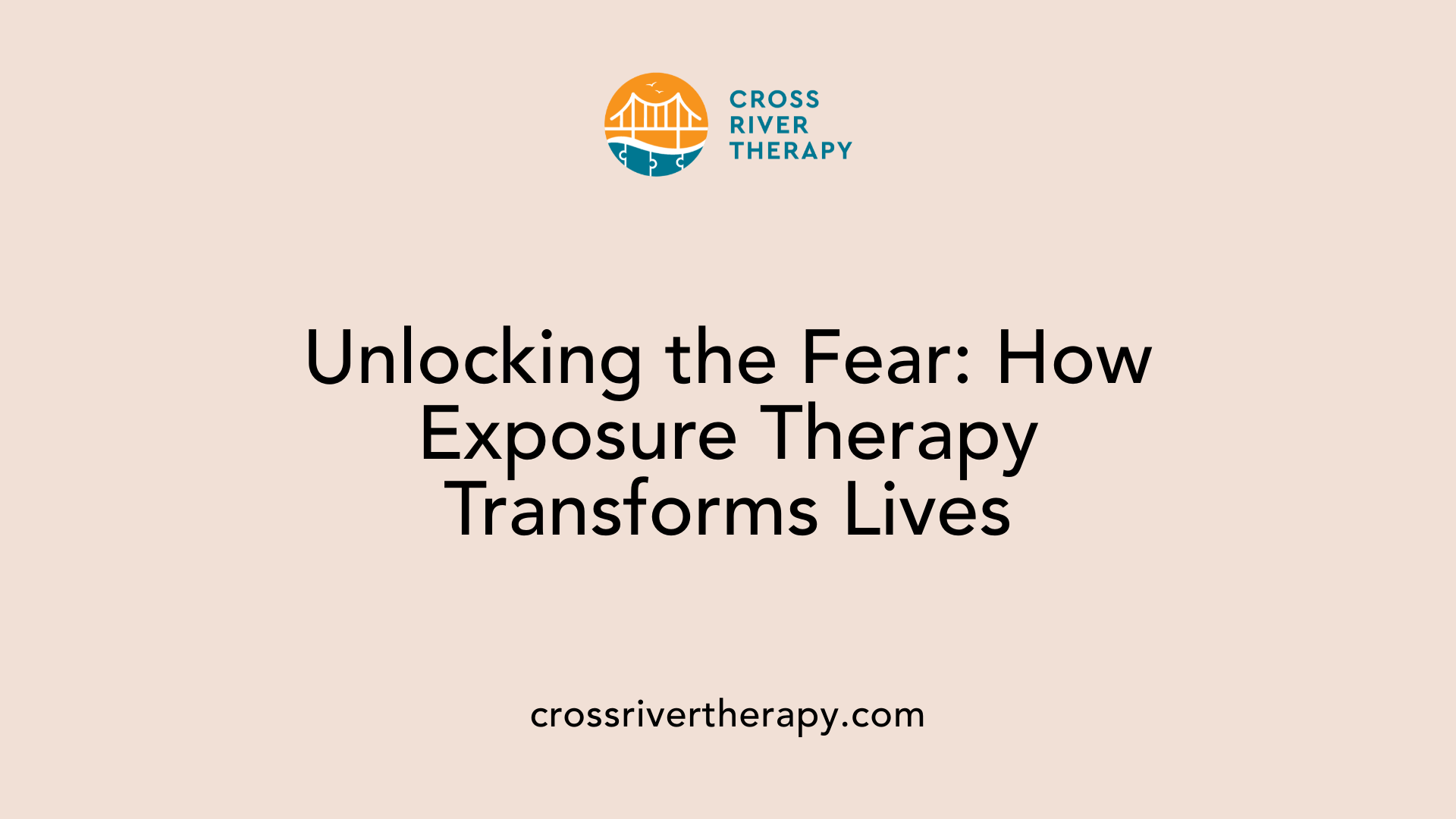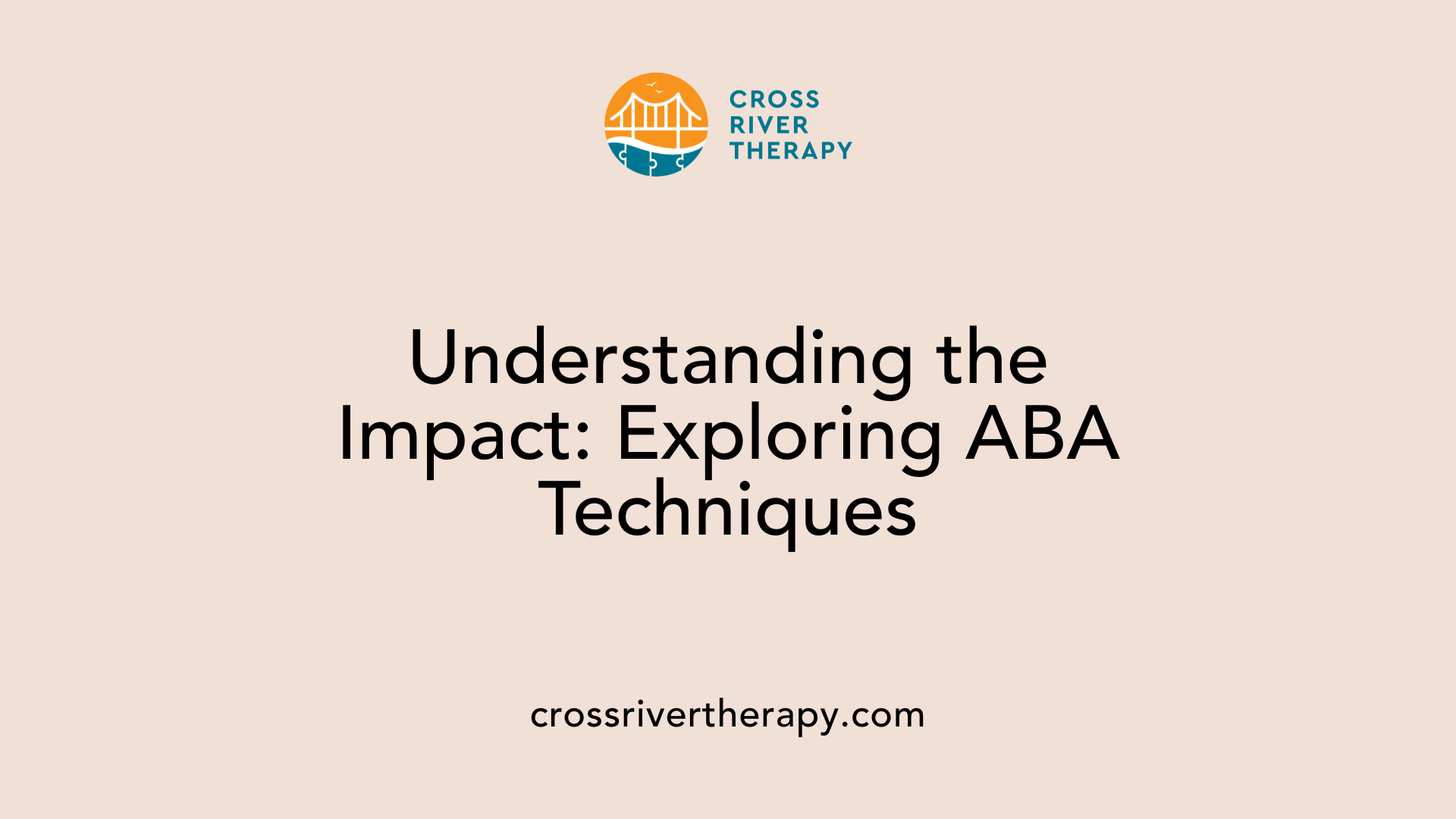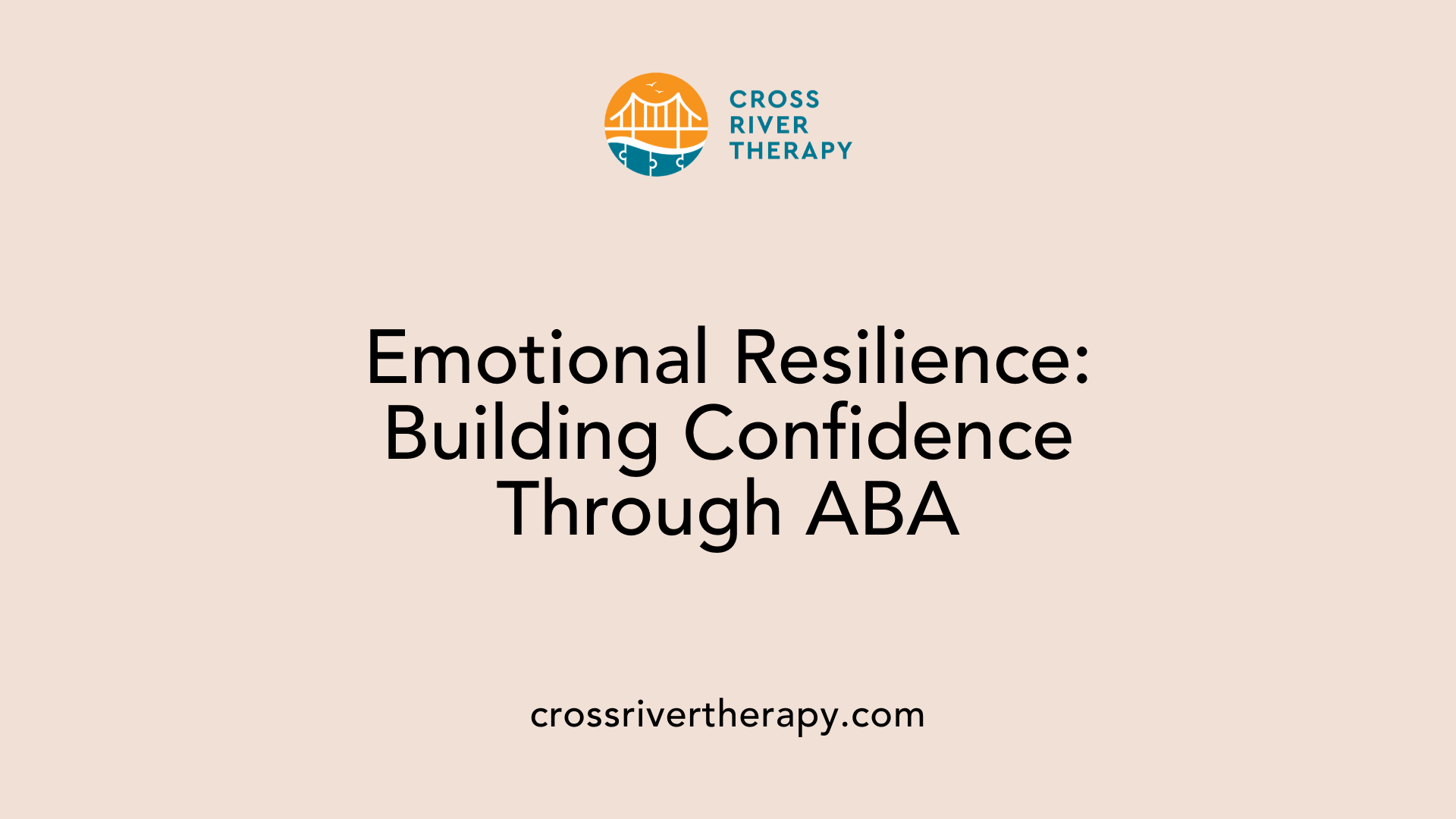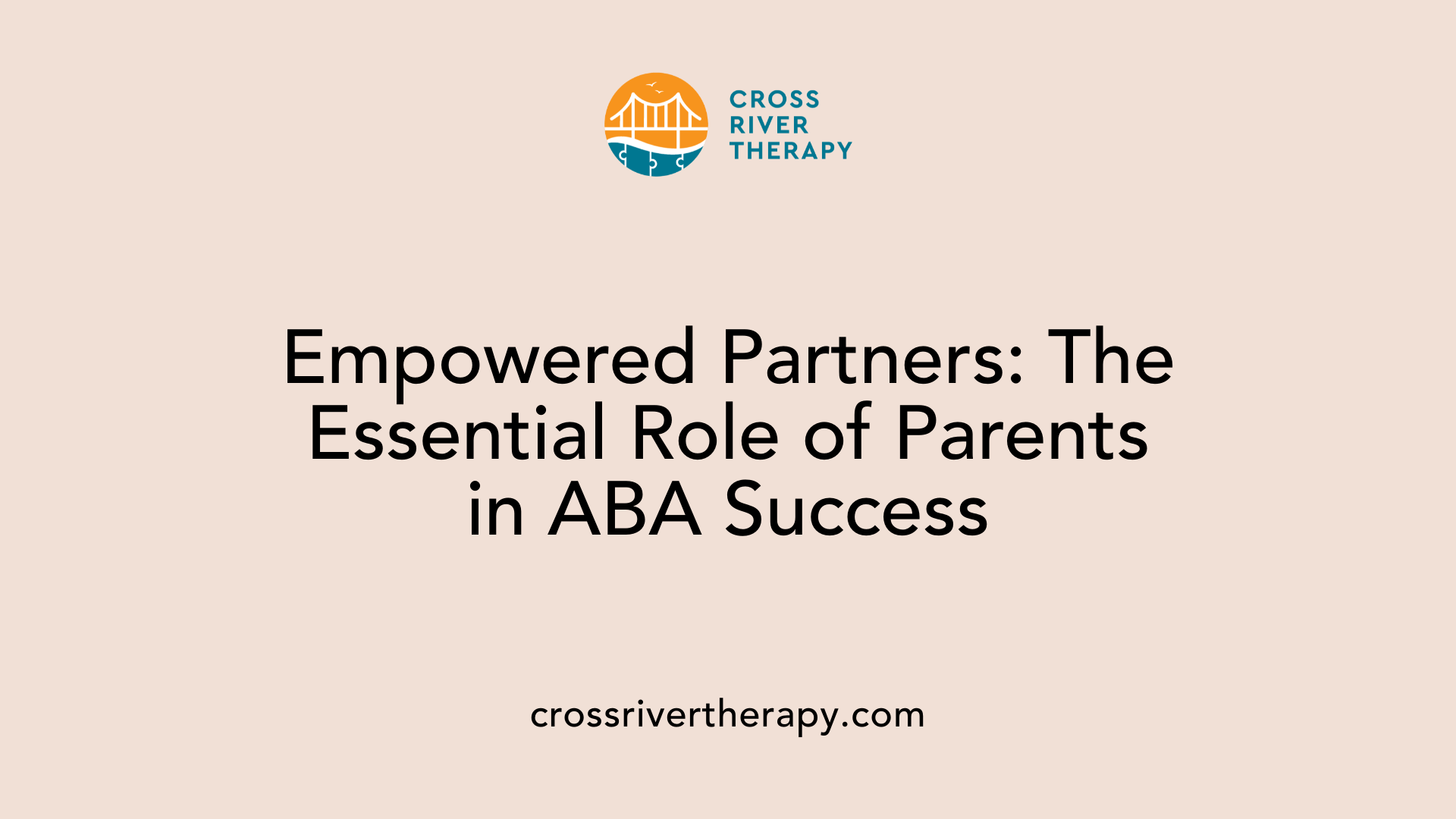How ABA Therapy Supports Children in Managing Phobias and Fears
Exploring Effective Strategies in ABA Therapy for Phobia Management in Children
Understanding ABA's Role in Alleviating Phobias and Fears
Applied Behavior Analysis (ABA) therapy represents a cornerstone in the psychological treatment of phobias and fears, especially within the autism spectrum. Essential techniques such as exposure therapy and positive reinforcement have become integral for supporting children who face heightened anxieties due to overwhelming phobias. This article explores how ABA therapy employs these strategies, alongside collaborations with other therapeutic methods, to foster better emotional well-being and help children confront their fears.
Key Facts on Exposure Therapy in ABA
- Exposure Therapy in ABA helps children confront fears in a controlled environment.
- Fear Hierarchies rank stimuli from least to most frightening to facilitate gradual exposure.
- Children can reduce phobias significantly by gradually confronting fears; 8 out of 9 succeeded in a study.
- Combining ABA with CBT and VR improves outcomes for children with ASD.
- Immersive VR allows exposure to fears like crowded spaces safely, enhancing engagement in therapy.
- Functional Behavior Assessment (FBA) identifies root causes of anxiety, guiding tailored interventions.
- Systematic Desensitization and consistent practice help children manage fear responses effectively.
- ABA techniques reduce fear-related anxieties, supporting confidence and emotional regulation in children.
- Individualized desensitization and structured environments cater to the unique needs of autistic children.
- Parental involvement is crucial; it reinforces strategies at home and aids in overcoming phobias.
1. Exposure Therapy in ABA: A Key to Confronting Fears

The Use of Exposure Therapy in ABA for Managing Phobias
Applied Behavior Analysis (ABA) therapy employs various strategies to assist children with autism in overcoming their phobias. One prominent feature of this approach is exposure therapy, which is designed to gradually expose children to the sources of their fear in a controlled and supportive environment. This gradual exposure helps them to face their anxieties rather than avoid them, ultimately leading to a reduction in their fear responses.
How Fear Hierarchies Assist in Gradual Exposure
A critical aspect of implementing exposure therapy is the development of fear hierarchies. This technique allows therapists and caregivers to rank the feared stimuli from least to most frightening. By starting with less intimidating situations, such as viewing pictures of the feared object, children can gain confidence as they progress through the hierarchy. Each successful step reinforces their ability to confront their fears, making it less daunting over time.
Examples of Success in Reducing Specific Phobias in Children
Research has shown that children can successfully confront their phobias through this structured approach. For instance, in a study involving nine boys with specific fears, such as crowded environments, eight were able to face their fears after exposure. Four of these children completely overcame their phobias, and the benefits were still evident 12 months later. This evidence demonstrates that when ABA techniques, particularly exposure therapy and effective fear hierarchies, are applied, they can lead to meaningful improvements in a child's ability to manage anxiety and engage in daily activities more freely.
| Approach | Features | Outcomes |
|---|---|---|
| Exposure Therapy | Gradual exposure to feared stimuli | Reduced anxiety responses |
| Fear Hierarchies | Ranking of fears from least to most daunting | Increased confidence in confronting fears |
| Positive Reinforcement | Encouraging progress with caregiver support | Improved coping strategies and behaviors |
2. Combining ABA with Innovative Therapies for Better Outcomes

Is ABA therapy effective when used with other therapeutic interventions like cognitive behavioral therapy and virtual reality environments?
Combining Applied Behavior Analysis (ABA) therapy with Cognitive Behavioral Therapy (CBT) and Virtual Reality (VR) environments can significantly enhance treatment outcomes for individuals, particularly for those with autism spectrum disorder (ASD). ABA emphasizes establishing positive behaviors and reducing negative ones, while CBT focuses on restructuring thought patterns and improving emotional regulation. This integration allows for a comprehensive, multifaceted approach to treatment, addressing both the behavioral and emotional aspects of phobias.
Using VR environments for phobia treatment offers immersive experiences that are particularly beneficial for children with ASD. The controlled settings allow gradual exposure to feared stimuli without the distress of real-life encounters. This method has shown particular promise; for instance, while applying the VR treatment, children can face fears such as crowded buses or loud noises in a safe space, helping them learn coping skills effectively.
Benefits of using immersive environments for phobia treatment
The benefits of employing immersive VR environments extend beyond mere exposure. They also help in:
- Reducing Anxiety: Immersive environments can lower anxiety levels during therapy, enabling better interaction between therapists and children.
- Controlled Practice: Children can practice confronting their fears in a simulated environment where they can gradually build confidence.
- Enhancing Engagement: The interactive and engaging nature of VR helps maintain children's interest and participation in the therapeutic process.
Case studies showcasing improved outcomes through combined therapies
A pivotal study involving nine verbally fluent boys with ASD demonstrated the effectiveness of combining CBT with VR exposure. Each child faced specific fears and participated in tailored virtual scenarios. Remarkably, after the treatment, eight out of nine children managed to confront their phobia, with four entirely overcoming it— and the benefits persisted 12 months later.
These findings support the notion that a collaborative approach, where ABA techniques create a strong base for behavioral improvement and innovative tools like VRE enhance exposure therapy, can lead to remarkable advancements in managing phobias. This integration fosters a supportive and adaptable environment, crucial for addressing the unique challenges faced by children with autism.
Understanding ABA Techniques and Their Effectiveness

What techniques in ABA therapy are used to address children's fears and how effective are they?
ABA therapy incorporates several techniques to effectively manage children's fears, particularly those related to autism spectrum disorders (ASD).
The role of Functional Behavior Assessment (FBA)
A crucial component of ABA is the Functional Behavior Assessment (FBA). This method helps identify the root causes of fear-related behaviors. Understanding why a child exhibits certain anxiety responses allows therapists to design interventions tailored to the individual’s specific needs.
Systematic desensitization and its outcomes
Systematic desensitization is another prominent strategy within ABA. This technique involves gradually exposing children to their fear triggers in a controlled manner. For instance, a child may first be asked to visualize a scary situation before confronting it in real life.
This phased approach has been shown to reduce anxiety and fear over time. Evidence suggests positive outcomes with more than half of participants in studies overcoming their fears completely after undergoing graduated exposures.
Evidence supporting ABA techniques
Research supporting the effectiveness of these ABA techniques is robust. Studies show significant reductions in problem behaviors associated with fears when FBA and systematic desensitization are applied.
Additionally, their versatility benefits not only children with ASD but also those with various anxiety-related issues, demonstrating the wide applicability of these strategies.
These methodologies, supported by single-subject experimental designs and case studies, highlight the substantial therapeutic benefits ABA can provide in managing children's fears, leading to improved emotional regulation and confidence.
Enhancing Emotional Well-being through ABA

How does ABA therapy improve emotional well-being in children with anxiety related to phobias?
Applied Behavior Analysis (ABA) therapy enhances emotional well-being in children facing phobias by implementing positive reinforcement techniques that encourage desirable behaviors. For instance, when a child successfully confronts a fear, they receive praise or rewards. This approach not only bolsters their confidence but also motivates them to continue engaging with challenging situations.
Additionally, teaching coping skills is vital. Children learn strategies like deep breathing and relaxation exercises, which help them manage their anxiety when confronted with stimuli that trigger their fears. Through structured exposure therapy, they gradually face their phobias in a safe and controlled environment, decreasing their anxiety levels over time.
What is the impact of consistent practice in emotional regulation?
The structured nature of ABA allows for consistent practice of coping skills, reinforcing emotional regulation. Regular sessions encourage repeated exposure to anxiety-inducing scenarios, fostering resilience. Children learn to utilize their coping strategies more effectively as they practice, aiding in emotional regulation during stressful encounters. This consistency is crucial as it builds a strong foundation for managing anxiety, ultimately leading to improved emotional stability.
Examples of improved emotional well-being
Engaging with ABA strategies has led to notable improvements. For example:
- Confidence building: A child who initially avoided social situations due to anxiety began to participate in group activities after working through their fears with ABA methods.
- Enhanced coping responses: A child learned to use breathing techniques effectively, resulting in fewer incidents of anxiety-driven behaviors, such as clothing ripping in stressful situations.
- Long-term success: Many children maintained the ability to confront their phobias months after therapy has ended, showcasing how skills learned through ABA can lead to lasting emotional well-being.
In conclusion, ABA therapy significantly supports children in navigating their fears and improving their quality of life, paving the way for a more positive emotional experience.
Tailoring ABA Therapy to Address Unique Needs of Autistic Children
What unique challenges might autistic children face with phobias and how can ABA therapy be tailored to meet these needs?
Autistic children often struggle with phobias that are influenced by their heightened anxiety levels and sensory sensitivities. Research indicates that about 40% of children with autism spectrum disorder (ASD) also face anxiety disorders. This combination can significantly intensify their fears, affecting daily activities, social interactions, and academic performance.
To effectively address these unique challenges, ABA therapy can be tailored in several ways:
Individualized Desensitization Techniques
Gradual exposure to fear-inducing stimuli can help children learn to cope with their anxieties. This method is crucial for building confidence.Structured Environments
Creating a structured setting enhances predictability for children, which can alleviate anxiety. Knowing what to expect reduces the likelihood of overwhelming situations.Relaxation Exercises
Incorporating relaxation techniques during therapy helps children manage stress responses, making it easier for them to confront their fears in a safe manner.
Additionally, integrating modified Cognitive Behavioral Therapy (CBT) techniques specifically designed for autistic individuals can provide substantial benefits.
Integration with Adapted CBT Methods
The combination of ABA strategies and adapted CBT approaches can enhance emotional regulation and social skills among children with phobias.
For instance:
- Exposure Therapy: Allows children to take gradual steps to face their fears, increasing their comfort level over time.
- Cognitive Techniques: Help in challenging negative thoughts linked with anxiety, enabling children to rethink their fears.
In summary, employing a flexible, personalized approach that combines ABA therapy and adapted CBT can empower autistic children to manage their phobias more effectively, ultimately improving their quality of life.
Crucial Role of Parents in ABA Therapy for Phobia Management

What role do parents play in managing their children's phobias through ABA therapy?
Parents play a vital role in managing their children's phobias through ABA therapy. They are instrumental in reinforcing learned behaviors at home, ensuring consistency, and fostering an environment conducive to recovery. By actively participating in strategies like systematic desensitization and positive reinforcement, parents help their children cope with their fears more effectively.
How can parents reinforce learned behaviors at home?
Parent involvement enhances treatment outcomes significantly. Confident parents tend to better support their children's progress, which is pivotal for overcoming phobias. Here are some essential strategies:
- Consistency: Implement ABA strategies, such as fear hierarchy practices, in daily routines.
- Emotional Support: Provide reassurance and validate their child's feelings, helping them manage stress and anxiety.
- Positive Reinforcement: Celebrate small victories and progress, encouraging continued efforts towards dealing with their phobias.
What are collaborative approaches with ABA therapists?
Clear communication between parents and ABA therapists is crucial. This collaboration allows for:
- Aligned Strategies: Ensuring that what is taught in therapy is consistently applied at home.
- Feedback Loop: Parents can provide therapists with insights on their child's behaviors, ensuring tailored interventions.
- Skill Generalization: Reinforcing learned behaviors in various environments, making it easier for children to face their fears.
Integrating these strategies into their routines makes parents integral to the overall success of ABA therapy—facilitating a supportive journey toward overcoming phobias and anxieties.
ABOVE
The application of ABA therapy in managing phobias and fears in children, particularly those on the autism spectrum, showcases its versatility and impact. Through strategies such as exposure therapy and systematic desensitization, ABA provides a structured approach that effectively reduces anxiety and enhances emotional well-being. When combined with other interventions like CBT and VR, the therapy's effectiveness is amplified, addressing both behavioral and cognitive aspects of phobias. Furthermore, the role of parents in reinforcing these strategies highlights a collaborative model essential for treatment success. As we continue to understand and refine these approaches, ABA therapy remains a valuable tool in promoting the health and happiness of children dealing with phobias and fears.
References
- Mastering Fear: Behavioral Approaches to Phobia Management with ...
- Reducing Specific Phobia/Fear in Young People with Autism ...
- Understanding and Addressing Agoraphobia in Children with Autism
- Managing anxiety in children with autism | Autism Speaks
- How Phobia Impacts Individuals with Autism - SkyCare ABA
- The effectiveness of applied behavior analysis program training on ...
- Autism therapy and intervention
- Optimising Anxiety Treatment for Autistic Children: a Narrative Review



